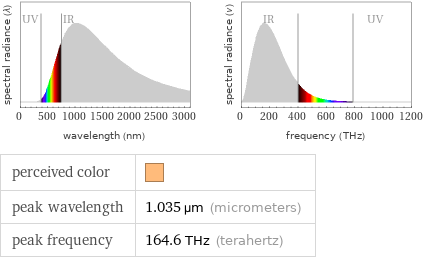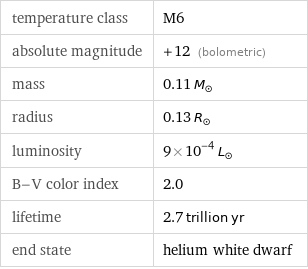Input interpretation

boron nitride | freezing point
Result

2527 °C (degrees Celsius)
Unit conversions

2800 K (kelvins)

4581 °F (degrees Fahrenheit)

5040 °R (degrees Rankine)

2022 °Ré (degrees Réaumur)

1334 °Rø (degrees Rømer)
Blackbody information

perceived color | peak wavelength | 1.035 µm (micrometers) peak frequency | 164.6 THz (terahertz)
Corresponding main-sequence star properties

temperature class | M6 absolute magnitude | +12 (bolometric) mass | 0.11 M_☉ radius | 0.13 R_☉ luminosity | 9×10^-4 L_☉ B-V color index | 2.0 lifetime | 2.7 trillion yr end state | helium white dwarf
Examples of M6 main-sequence stars

V1365 Orionis | Gl 860 B
Corresponding quantities

Thermodynamic energy E from E = kT: | 24 ceV (centielectronvolts)

Blackbody energy flux Φ from Φ = σT^4: | 3.486×10^6 W/m^2 (watts per square meter)

Approximate luminous exitance from a planar blackbody radiator perpendicular to its surface: | 5.201×10^7 lx (lux)